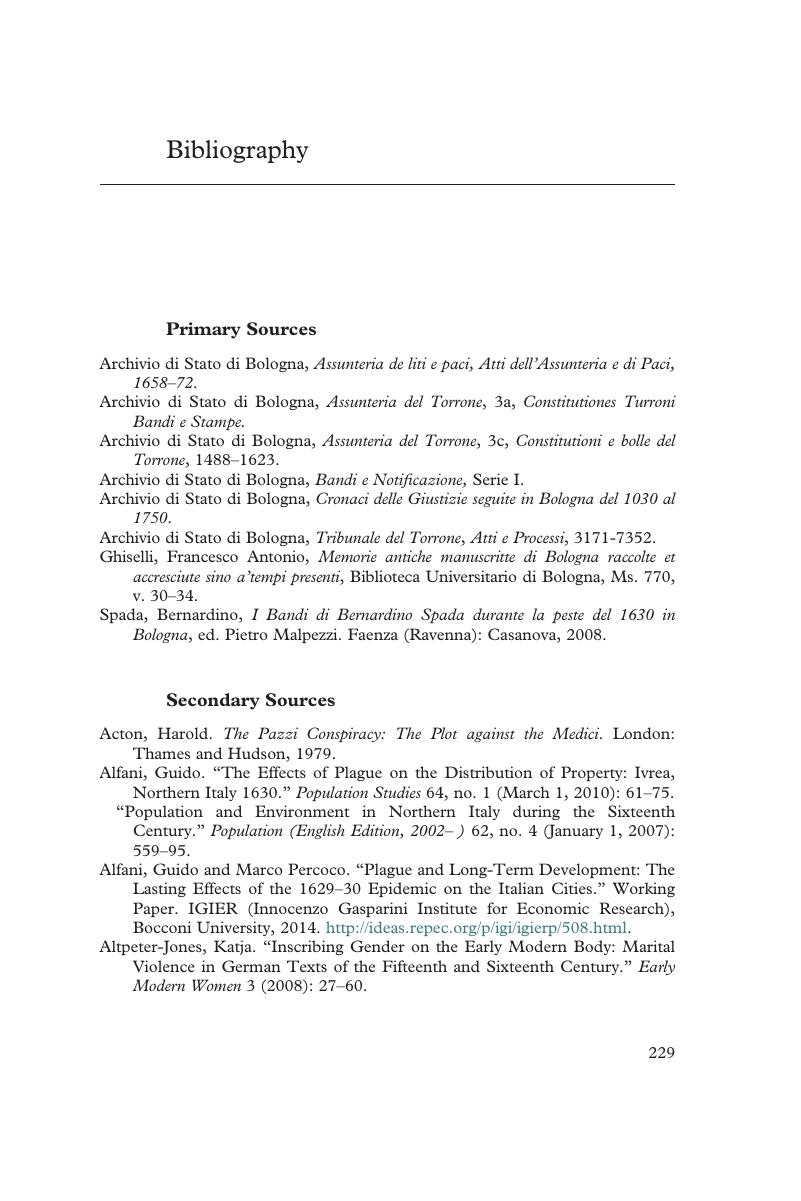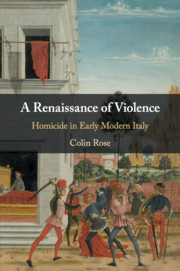Book contents
- A Renaissance of Violence
- A Renaissance of Violence
- Copyright page
- Dedication
- Contents
- Illustrations
- Acknowledgments
- 1 Introduction
- 2 The Tower of Justice
- 3 Homicide in Bologna, 1600–1700
- 4 Gender and Homicide in Early Modern Bologna
- 5 The Days after No Future
- 6 It’s Good to Have Land
- 7 Conclusion
- Bibliography
- Index
- References
Bibliography
Published online by Cambridge University Press: 07 October 2019
- A Renaissance of Violence
- A Renaissance of Violence
- Copyright page
- Dedication
- Contents
- Illustrations
- Acknowledgments
- 1 Introduction
- 2 The Tower of Justice
- 3 Homicide in Bologna, 1600–1700
- 4 Gender and Homicide in Early Modern Bologna
- 5 The Days after No Future
- 6 It’s Good to Have Land
- 7 Conclusion
- Bibliography
- Index
- References
Summary

- Type
- Chapter
- Information
- A Renaissance of ViolenceHomicide in Early Modern Italy, pp. 229 - 241Publisher: Cambridge University PressPrint publication year: 2019



